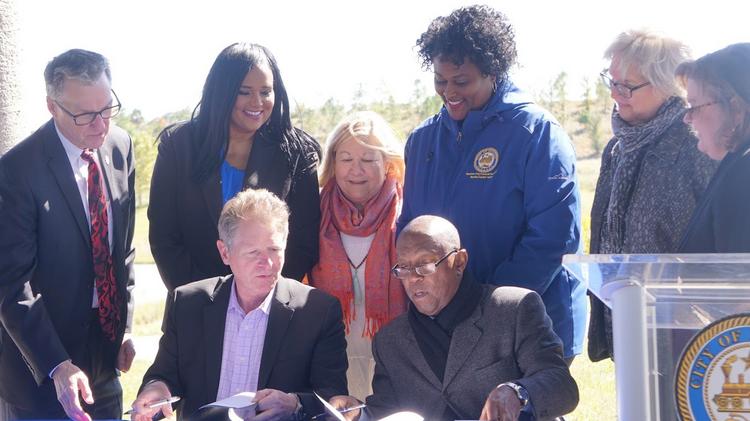PlazAmericas, the former Sharpstown shopping center that has struggled to find its footing as regional malls have fallen out of shoppers’ favor, has a new owner that wants to turn around the property while maintaining the diverse culture, particularly Latino, that exists there today.
Baker Katz, a Houston commercial real estate firm, has purchased the property from a Philadelphia financial company that acquired mall out of bankruptcy about a decade ago. The developers said they intend to make improvements, but will first spend time studying what the property needs most.
Baker Katz, a Houston commercial real estate firm, has purchased the property from a Philadelphia financial company that acquired mall out of bankruptcy about a decade ago. The developers said they intend to make improvements, but will first spend time studying what the property needs most.
“It’s not our goal to come in and be the big bad developer,” said Baker Katz Principal Jason Baker. “Our goal is to build on and improve on what’s there already.”
Located at the busy intersection of U.S. 59 and Bellaire, the former Sharpstown Center opened in 1961. Frank Sharp, who developed the Sharpstown neighborhood, naming it after himself, also built the mall.
In later decades, the shopping center struggled as newer malls opened. The ownership became fractured. Baker Katz is buying the mall’s largest section, but its purchase does not include any of the attached anchor stores or the 10-story building that rises from the property.
The former Montgomery Ward, JC Penny, and Macy’s buildings all have different owners. The high-rise, too, has a separate owner and so-called out parcels closer to the road are under different ownership.
“Those agreements essentially prevent major changes from happening at the property in the near future,” said Justin Segal, president of Boxer Property Management Corp., which managed the mall several years ago and was involved in repositioning it from an outdated, struggling mall to PlazAmericas, which largely caters to area’s diverse population.
“There’s definitely a viable strategy of maintaining its current form and having an eye on the future for when it’s subject to fewer restrictions,” Segal said. “Baker Katz is a great company. They’re local, they’re well respected and they have a long history in retail.”
Retail developer Ed Wulfe, said the mall has a prime location but echoed the concern over the ownership issues.
“It’s fraught with problems that hopefully they can work out,” Wulfe said. “As far as I’m concerned, for first time it’s in hands of an experienced shopping center developer.”
Commercial realty firm CBRE put the property on the market earlier this year. There was not a public asking price. The Harris County Appraisal District values the property at $12.2 million.
The mall can be slow on weekdays, but it is busy during weekends when it becomes a gathering spot for families who come not only for shopping but also live music and entertainment for children. Still, the surrounding area has struggled from a reputation standpoint, following bouts of crime in previous years.
As Houstonians who specialize in retail properties, the Baker Katz principals said they have for years studied the mall, which they say has several advantages, including a location at a busy intersection in one of the most densely populated areas in Houston. Baker emphasized the positive aspects of the property, including diversity and community involvement.
“We want to build on what’s there and hopefully turn this perception, whatever that might be, completely turn it around,” he said. “We’re not merchant builders. This is not a slide in and slides out. We’re absolutely looking at this as a long-term hold. We want to be part of the community.”








:no_upscale()/cdn.vox-cdn.com/uploads/chorus_asset/file/19339594/shutterstock_1316774534__1_.jpg) Developer Jacob Sudhoff remembers when Houston had a much different profile when the Texas metropolis was considered just a “cow and oil town” built around sprawl, suburbs, and anything-goes zoning.
Developer Jacob Sudhoff remembers when Houston had a much different profile when the Texas metropolis was considered just a “cow and oil town” built around sprawl, suburbs, and anything-goes zoning.
 Commercial real estate giant JLL announced plans to purchase Peloton Commercial Real Estate Thursday. The merger will effectively pull Peloton’s Dallas and Houston offices into JLL’s agency leasing and property management business lines.
Commercial real estate giant JLL announced plans to purchase Peloton Commercial Real Estate Thursday. The merger will effectively pull Peloton’s Dallas and Houston offices into JLL’s agency leasing and property management business lines.